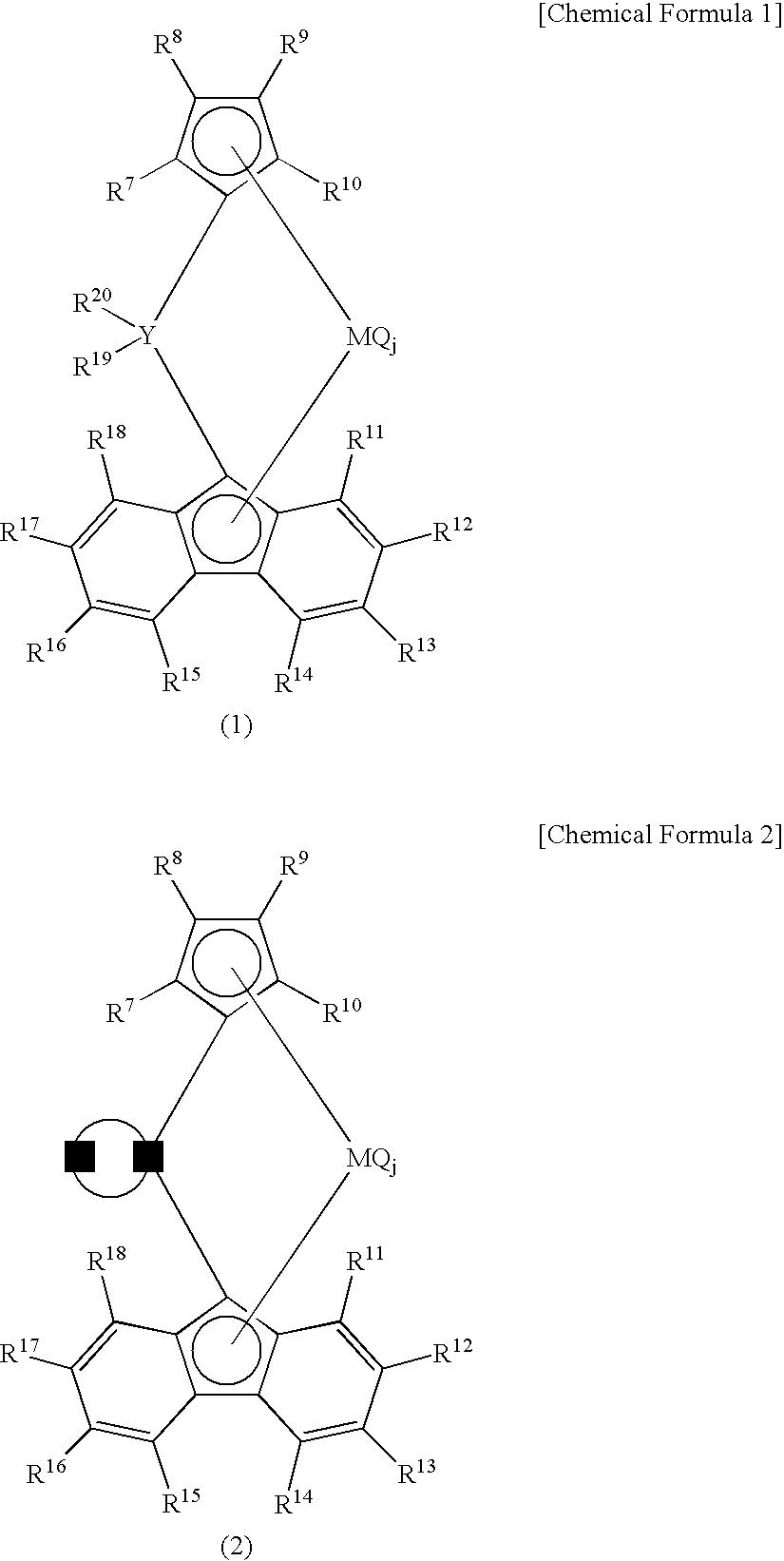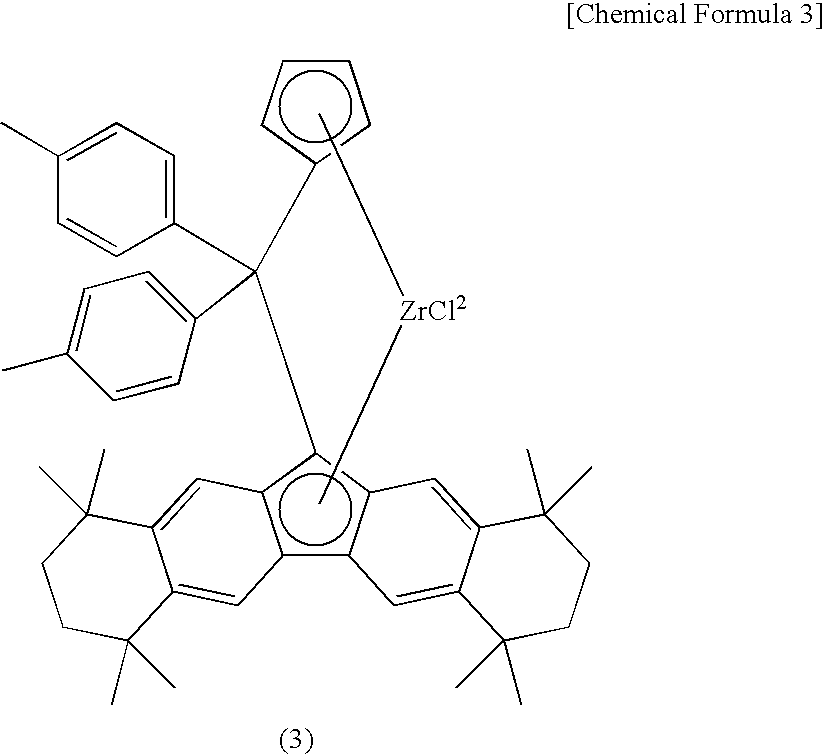Ethylenic Polymer and Molded Article Obtained Therefrom
a technology of ethylene and olefin, applied in the direction of synthetic resin layered products, chemistry apparatus and processes, layered products, etc., can solve the problems of low melt tension, low mechanical strength of films, limited molding speed, etc., and achieve excellent mechanical strength properties and excellent transparency and moldability.
- Summary
- Abstract
- Description
- Claims
- Application Information
AI Technical Summary
Benefits of technology
Problems solved by technology
Method used
Image
Examples
synthesis example 1
Preparation of Solid Catalyst Component (α)
[0230]8.5 kg of silica dried at 200° C. for 3 hours was suspended in 33 liters of toluene, and then 82.7 liters of a methylaluminoxane solution (Al=1.42 mol / L) was added dropwise over 30 minutes to the suspension. Next, the resulting mixture was heated to 115° C. in 1.5 hours and allowed to react at that temperature for 4 hours. Subsequently, the reaction mixture was cooled to 60° C. and the supernatant liquid was removed by decantation. The resulting solid catalyst component was washed with toluene three times, and was resuspended in toluene to give a solid catalyst component (α) (the total volume: 150 liters).
[0231][Preparation of Supported Catalyst]
[0232]To a reactor in which the air had been sufficiently replaced with nitrogen, 19.60 mol (in terms of aluminum) of the above-mentioned solid catalyst component (α) suspended in toluene was added. While stirring, to the resulting suspension, 2 liters (61.12 mmol) of 31.06 mmol / L solution of ...
example 1
[0235]To a first polymerization reactor, 45 L / h of hexane, 0.050 mmol / h (in terms of Zr atom) of the solid catalyst component (δ) obtained in Synthesis Example 1, 4 mmol / h of triethylaluminum, 8.1 kg / h of ethylene, 251 g / h of 1-hexene and 40 N-L / h of hydrogen were continuously supplied. Further, while continuously withdrawing the contents in the polymerization reactor so that the liquid level in the polymerization reactor was constant, polymerization was carried out under the conditions of a polymerization temperature of 75° C., a reaction pressure of 7.5 kg / cm2G and an average residence time of 2.5 hours. The unreacted ethylene and hydrogen were substantially removed from the contents continuously withdrawn from the first polymerization reactor in a flash drum maintained at an internal pressure of 0.30 kg / cm2G and at 65° C.
[0236]After that, the contents were continuously supplied to a second polymerization reactor, together with 43 L / h of hexane, 5.7 kg / h of ethylene,...
example 2
[0239]To a first polymerization reactor, 45 L / h of hexane, 0.0110 mmol / h (in terms of Zr atom) of the solid catalyst component (5) obtained in Synthesis Example 1, 20 mmol / h of triethylaluminum, 8.1 kg / h of ethylene, 149 g / h of 1-hexene and 50 N-L / h of hydrogen were continuously supplied. Further, while continuously withdrawing the contents in the polymerization reactor so that the liquid level in the polymerization reactor was constant, polymerization was carried out under the conditions of a polymerization temperature of 75° C., a reaction pressure of 7.5 kg / cm2G and an average residence time of 2.5 hours. The unreacted ethylene and hydrogen were substantially removed from the contents continuously withdrawn from the first polymerization reactor in a flash drum maintained at an internal pressure of 0.30 kg / cm2G and at 65° C.
[0240]Then, the contents were continuously supplied to a second polymerization reactor, together with 43 L / h of hexane, 49 kg / h of ethylene, 3 N-...
PUM
| Property | Measurement | Unit |
|---|---|---|
| density | aaaaa | aaaaa |
| temperature | aaaaa | aaaaa |
| melt tension | aaaaa | aaaaa |
Abstract
Description
Claims
Application Information
 Login to View More
Login to View More - R&D
- Intellectual Property
- Life Sciences
- Materials
- Tech Scout
- Unparalleled Data Quality
- Higher Quality Content
- 60% Fewer Hallucinations
Browse by: Latest US Patents, China's latest patents, Technical Efficacy Thesaurus, Application Domain, Technology Topic, Popular Technical Reports.
© 2025 PatSnap. All rights reserved.Legal|Privacy policy|Modern Slavery Act Transparency Statement|Sitemap|About US| Contact US: help@patsnap.com


